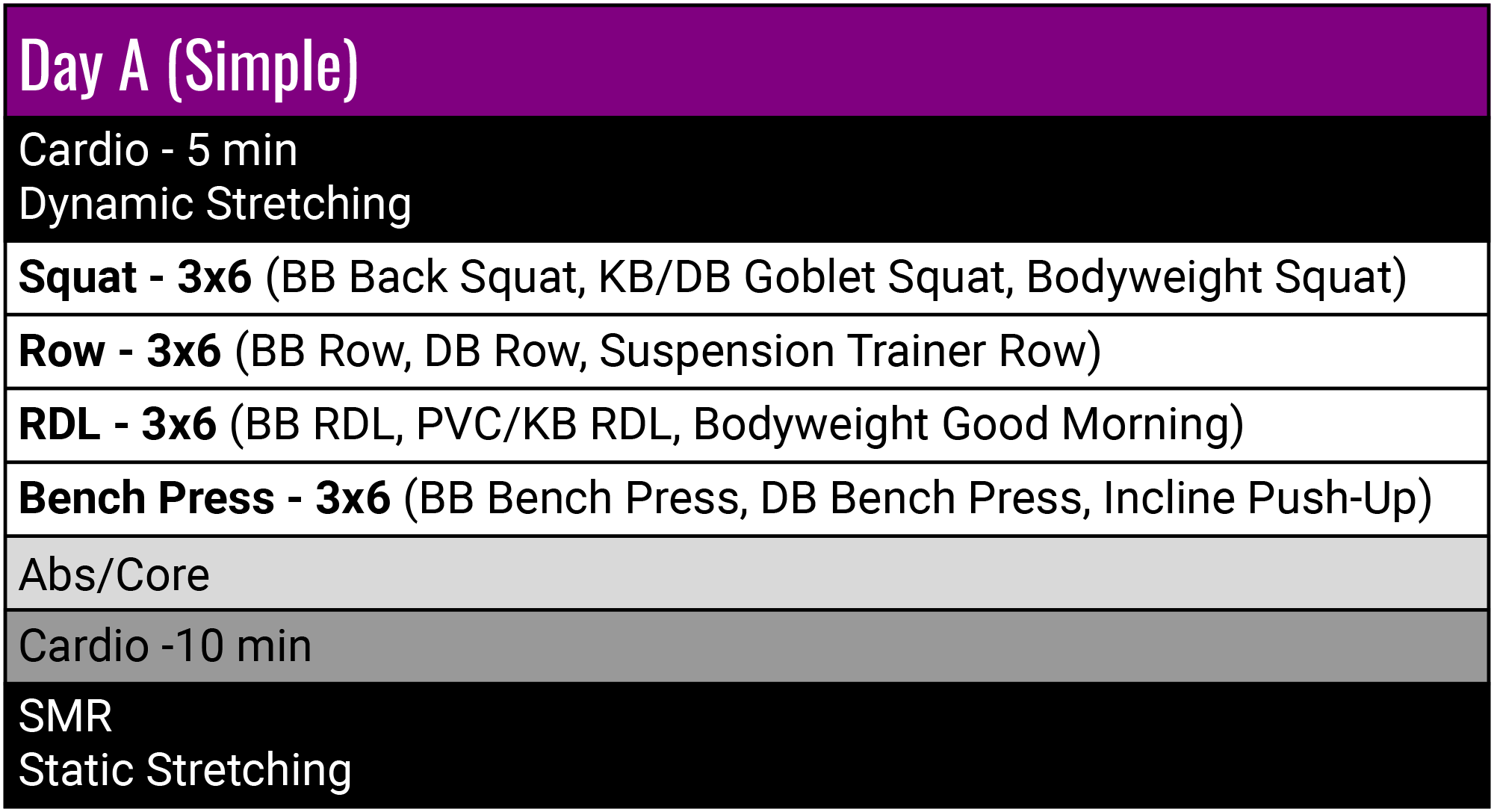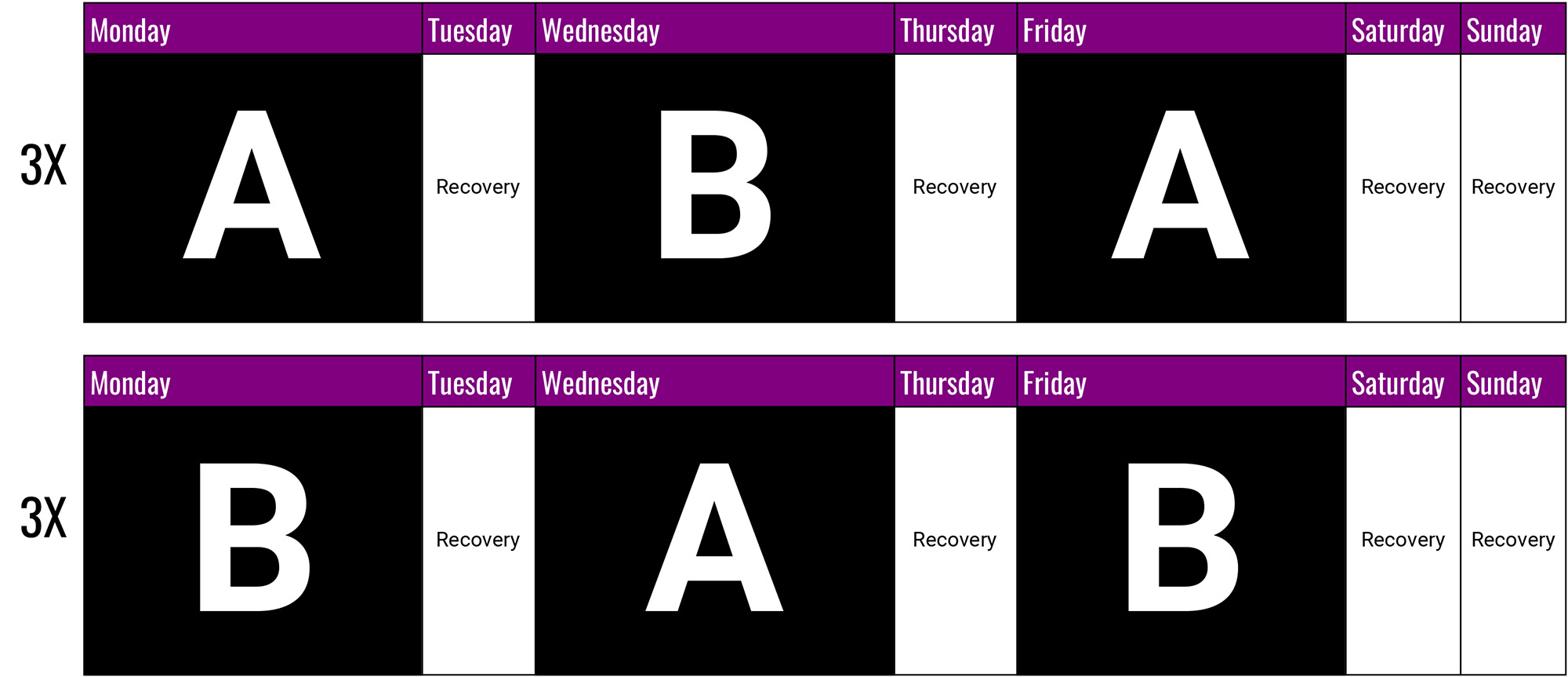
MORE PROGRAM DETAILS
For more information about program language, terms, and abreviations, download the full program PDF.
Strength Training for Beginners
The Beginner program is an introductory weight training routine designed to familiarize new lifters with a few standard movement patterns and the barbell. The Beginner is ideally meant to serve as a temporary (2-6+ month) learning period to help new lifters transition to more intense and higher frequency routines. If you’re interested in incorporating a more serious weight training program into your routine but don’t know where or how to begin, this is the place to start. This program is also great for those who have been out of the gym for an extended period of time.
The Beginner program emphasizes strength development. It consists of two alternating days that are performed 2-3 times per week. Each day contains only four compound exercises. I recommend new lifters start with the twice per week version and maintain that training frequency until they stop seeing consistent progress. Increase your weekly training frequency to 3X when 2X stops being effective.
Simplified versions of these two days are listed below.


All working sets should be performed with a challenging weight (RPE 7+), but avoid failure. Leave 1-2 reps in reserve. Aim to add a moderate amount of weight (5-10 lbs) to your lifts weekly or increase reps (up to 8). When 3×8 is consistently repeatable, drop the reps back to 6 and add a little weight. Give yourself 48-72 hours of rest between sessions. The simplified version shows both the standard working set exercises and their modifications, from most to least difficult.
How long should you spend in the learning phase? There’s not an exact duration for the initial A/B split, but all new lifters should spend at least 2-3 months on this program. Closely monitor your weekly progress to determine when you’ve reached an intermediate experience level which is defined by a strength plateau. When you stop improving from the same basic workouts, it’s time to move on. Some may reach this point after 2-3 months while others might continue progressing up to a year. Listen to your body, do what’s best for you, move on when you’re ready, but do not rush it. The more strength you build at the beginning, the heavier your high volume work will be later.
If you plateau on the Beginner but don’t want to change the routine significantly, modify the rep scheme by adding some simple progressive overloading. Instead of 3×6 for all lifts, run a four week cycle with 12/10/8/6 weekly rep counts. (3×12 for all lifts week one, 3×10 for all lifts week two, etc.) Similar to the standard program, keep repeating this cycle until you stop seeing progress.
Download the full program using the link above to view all exercise details, terms/abbreviations, and supplemental fat loss cardio.
Example Weeks


Form FAQ
Exercise Form Video Library
The following video examples are provided to supplement your learning, but the links shared should not be your only source of instruction. No single educator can teach you everything. Seek out other respected content creators and learn from as many experts as you can.